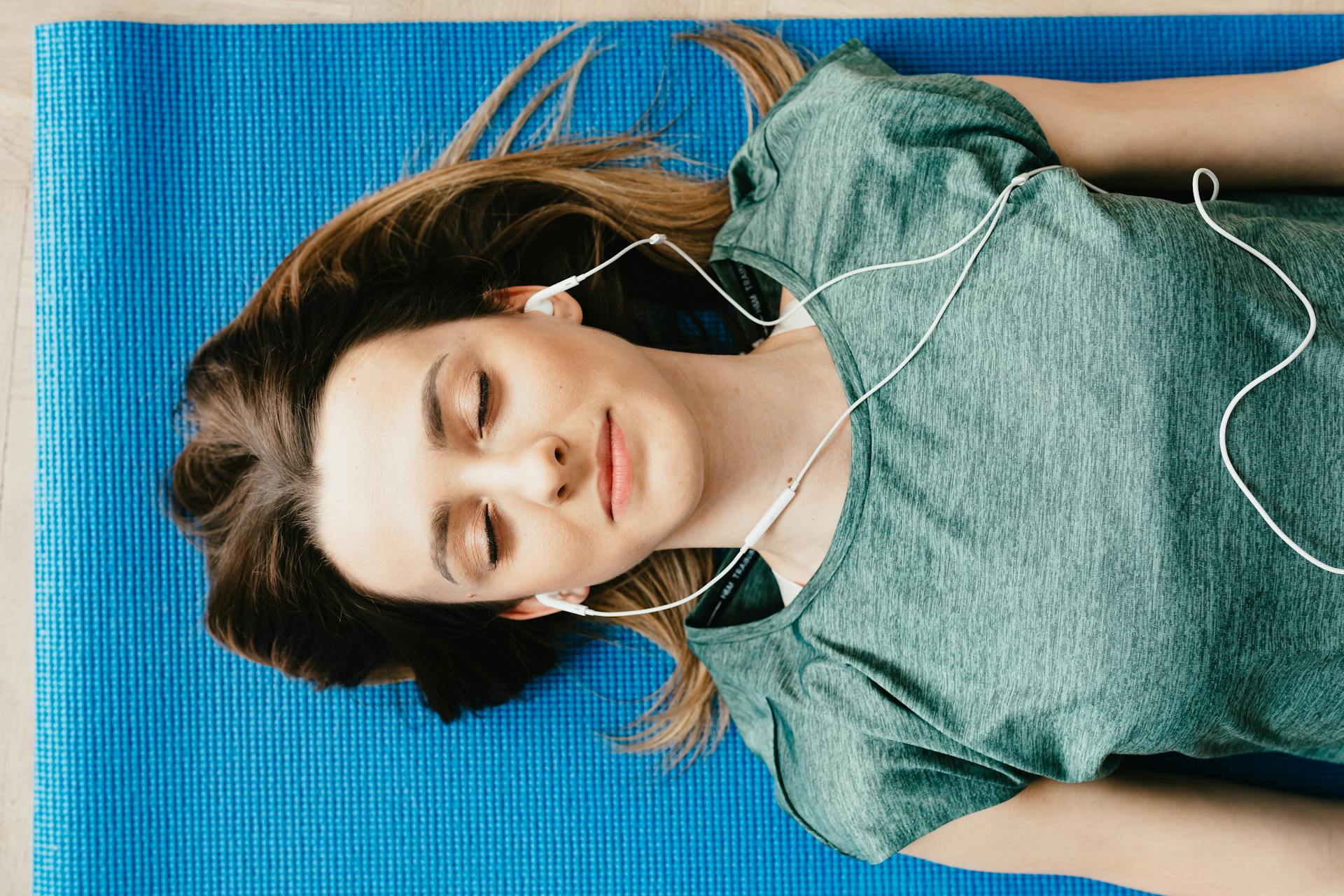In a world where even kids aren’t immune to anxiety, overstimulation, and sleepless nights, calming audio can be a gentle game-changer. Stress audio for children isn’t just soft music or lullabies—it’s an intentional blend of sound therapy, guided relaxation, and emotional regulation tools that meet kids exactly where they are.
Whether your little one struggles to fall asleep, needs help calming down after a meltdown, or simply benefits from soothing background noise while focusing on homework, the right tracks can make a huge difference. This guide will walk you through how and why stress audio works for children, and offer specific types of tracks for bedtime, focus, and emotional regulation.
Why Kids Need Calming Audio Now More Than Ever
Children today are navigating a world filled with sensory overload. From noisy classrooms and screentime stimulation to packed schedules and even emotional stress from family dynamics or world events, kids often lack healthy tools to decompress.
Stress audio gives them a non-verbal, non-judgmental space to regulate their nervous system. When designed well, calming audio:
- Slows the heart rate
- Promotes deeper breathing
- Activates the parasympathetic nervous system
- Encourages sleep hormone production (like melatonin)
- Distracts from overstimulating or upsetting environments
And because sound is something kids don’t need to analyze or “get right,” it provides relief without pressure.
1. Calming Tracks for Bedtime
The Power of Routine
Bedtime stress audio creates predictable cues that it’s time to wind down. When paired with a consistent routine (like brushing teeth, story time, and dimming lights), it helps the brain switch from alert mode to rest mode.
Top Types of Bedtime Audio for Kids:
🎵 Nature-Based Sleep Sounds
Sounds like rainfall, ocean waves, rustling leaves, or distant thunder are deeply soothing. These mimic the womb-like background noise babies are used to and have a calming, primal effect.
Best for: Infants to early elementary age
Try searching: “gentle ocean waves + kids sleep” or “rainforest sleep sounds for children”
🎵 Instrumental Lullabies
Classical or slow instrumental versions of lullabies (like “Twinkle Twinkle” or “Brahms’ Lullaby”) can trigger sleepy associations and work across age groups. Some even incorporate soft harp or music box tones.
Best for: Toddlers through grade school
Pro tip: Look for loopable tracks that play continuously all night.
🎵 Guided Sleep Meditations
For older kids or those with more verbal thinking, sleep meditations help narrate relaxation. A calm voice leads them through body scans, deep breathing, and safe mental imagery (like floating on clouds or being cuddled by stardust).
Best for: Ages 6+
Popular themes: Magic sleep train, dream forest, moonlight breathing
🎵 Binaural Beats for Deep Sleep
Binaural beats use two slightly different frequencies in each ear to sync brainwaves into slower states. They’re subtle, but many parents report fewer night wakings or faster sleep onset when using delta-wave tracks.
Best for: Teens or highly sensitive kids (with headphones)
2. Focus Audio for Study and Homework
Why Focus Audio Works for Kids
Children often struggle to stay on task, especially in noisy homes or classrooms. Focus audio can act as a sensory anchor—helping tune out distractions and improve task initiation and completion.
Best Audio Types for Focus:
🎵 White Noise or Brown Noise
These static-like sounds create an auditory wall between the child and surrounding distractions (siblings, traffic, conversations). Brown noise is softer and deeper, often preferred by kids with sensory sensitivities.
Best for: Homework time, reading, quiet play
🎵 Lo-Fi Study Music (Instrumental Only)
Lo-fi beats are rhythmically steady, not overly stimulating, and can create a sense of relaxed motivation. The absence of lyrics means kids aren’t distracted by words, and the beat often matches the brain’s “flow” frequency.
Best for: Tweens and teens, especially during reading or creative tasks
Find playlists: “Lo-fi for school kids,” “kid-friendly study beats,” “focus music no lyrics”
🎵 Classical Music and Baroque Tempo Tracks
Classical music—especially pieces with a tempo of around 60–80 bpm—has been shown to enhance memory, mood, and focus. Baroque composers like Bach and Handel are popular for this.
Best for: Kids who like music while they work but need a calm pace
🎵 Sound Bath Tones for Learning Spaces
Some parents have had success playing subtle Tibetan bowls or sound bath audio during homework time. These are grounding, slow, and create a peaceful vibe in a room that’s usually high-energy.
Best for: Highly sensitive, spiritual, or energetically reactive kids
3. Audio for Emotional Regulation
When Meltdowns Happen
Meltdowns, anxiety attacks, or dysregulated moments can feel like hurricanes—for kids and parents alike. While the instinct is to talk them down, sometimes the fastest path to calm is through sound, not words.
Here’s how specific types of audio can help your child regain emotional balance:
🎵 Breathing Prompt Tracks
These are audio files with calming music overlaid with breathing instructions: “Breathe in…2…3…4. Breathe out…2…3…4.” This guides the child through regulation without needing your full presence.
Best for: Ages 5+, especially after tantrums or overstimulation
Tip: Play during transition moments (e.g., leaving the playground, arriving at school)
🎵 Heartbeat Sounds and Womb Audio
Infants and toddlers often calm when exposed to rhythmic, in-womb-style sounds. These replicate the prenatal soundscape—heartbeat, fluid swirls, and maternal muffled tones—and are particularly effective for children who experienced NICU stays or early trauma.
Best for: Infants, toddlers, neurodivergent kids
Can also be played through crib speakers or baby-safe Bluetooth devices.
🎵 Emotion-Themed Audio Stories
These are narrated stories with soundscapes built around big feelings: anger, sadness, jealousy, or fear. The child listens to a character experience the same feeling and then learn how to regulate it.
Best for: Ages 4–10
Search terms: “emotional regulation audio for kids,” “mindfulness stories for emotions”
🎵 Affirmation Tracks
These play slow, soothing music underneath positive mantras like “I am safe,” “I am loved,” or “Feelings come and go.” They’re great after an emotional event, during therapy, or before school.
Best for: Anxious kids or those with low self-esteem
Tip: Record your own voice reading affirmations for extra impact.
When and How to Use Stress Audio with Kids
Create Audio “Zones”
Designate spaces for specific kinds of audio:
- Sleep zone: Bedtime tracks only. No stimulation.
- Focus zone: Desk or homework area with study audio only.
- Calm zone: A cozy corner with headphones, weighted blankets, and emotional regulation tracks.
This helps children associate sounds with actions, making the audio more effective over time.
Choose the Right Delivery Method
- Bluetooth speakers: Great for bedtime, especially models that loop tracks.
- Headphones: Ideal for study sessions or binaural beats. For kids, look for volume-limited models.
- MP3 players: Handy for screen-free access, especially for younger children.
- Apps and streaming platforms: Spotify, YouTube Kids, and Insight Timer all offer child-safe playlists.
Pair Audio with Rituals
Pair the audio with a physical cue: a warm bath, a favorite stuffed animal, or essential oils. This multisensory approach helps the nervous system absorb the calming intent more quickly.
Top Free and Paid Resources for Kids’ Stress Audio
Free Platforms
- YouTube Kids: Search for “guided sleep meditation for children” or “kids focus music”
- Insight Timer (Kids Section): High-quality guided meditations, stories, and soundscapes
- Spotify: Use terms like “calm kids,” “study music for children,” or “kids anxiety relief audio”
Paid/Subscription Options
- Moshi Sleep and Mindfulness App: Premium stories and meditations with child-friendly narration
- Slumberkins Audio Affirmations: Designed by therapists, includes characters and emotional themes
- Calm Kids (from Calm app): Includes meditation, music, and lullabies—great for families
- Headspace for Kids: Offers a wide selection of mindfulness and emotional health audio
Real-World Use Cases: What Parents Are Saying
“My 8-year-old listens to a sleep story about a floating turtle every night. It knocks her out in minutes.” — Kara M., Oregon
“During remote school, my ADHD son focused 3x longer with brown noise in headphones.” — James D., Texas
“After her tantrums, I let my daughter lay on her beanbag and listen to a ‘breathe with me’ track. It resets her better than anything else.” — Trina A., Illinois
These stories are becoming more common, and it’s not surprising. Children are highly responsive to rhythm, repetition, and tone—and stress audio taps into all three.
Final Thoughts: Calming Kids Starts with Calming Sound
There’s no one-size-fits-all tool for helping kids manage stress, but calming audio is one of the easiest, safest, and most effective to start with. Whether you use it to usher in peaceful sleep, focus a distracted mind, or cool an emotional storm, it works quietly behind the scenes to support your child’s nervous system.
Start small. Try one track. Create one ritual. Watch your child soften.
Because when a child learns how to self-soothe through sound, you’re not just calming them today—you’re giving them a lifelong skill for emotional resilience.
Need recommendations? Stay tuned for our upcoming blog post: “Top 10 Calming Audio Tracks for Kids You Can Download Right Now.”
Or browse our curated library of stress audio for kids, parents, and families at StressAudio.com — where emotional wellness begins with the right sound.

